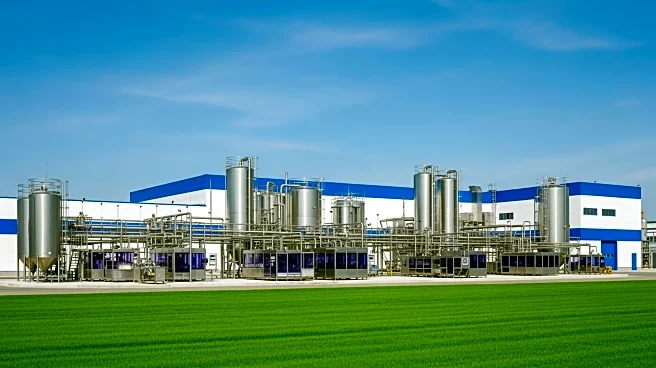What's Happening?
The UK National Electricity System Operator (NESO) has projected a significant increase in grid flexibility by 2035 to maintain stability as renewable energy sources replace traditional power stations. This forecast is part of NESO's Clean Flexibility
Roadmap, which highlights the need for a fourfold increase in flexibility to secure the electricity system. The urgency of this transition was underscored in January 2025 when low wind generation and interconnector outages led to a 1.7-gigawatt shortfall, prompting NESO to issue an Electricity Margin Notice. This notice indicated that the system was on the brink of blackouts, emphasizing the critical need for reliable backup capacity. Over the past two years, the UK grid has experienced numerous planned and unplanned interconnector outages, further stressing the importance of having robust backup systems in place.
Why It's Important?
The shift towards renewable energy is crucial for meeting decarbonization targets, but it also introduces challenges in maintaining grid stability. The projected increase in flexibility is vital for preventing power shortages and ensuring a reliable electricity supply. This development is particularly significant for UK manufacturers, who face rising energy costs and potential disruptions from grid instability. The Capacity Market offers a solution by allowing manufacturers to generate revenue through energy flexibility, thus enhancing their resilience against unplanned outages. This strategic approach not only supports the UK's energy transition but also provides a competitive edge for businesses by securing their energy supply and contributing to sustainability goals.
What's Next?
As the UK continues to transition to renewable energy, the focus will be on implementing the necessary infrastructure to support increased grid flexibility. This includes enhancing interconnector reliability and developing backup capacity to handle periods of low renewable generation. Manufacturers and other stakeholders are likely to engage more actively in the Capacity Market to mitigate risks and capitalize on new revenue opportunities. The success of these initiatives will depend on effective policy implementation and collaboration between government, industry, and energy providers to ensure a stable and sustainable energy future.













